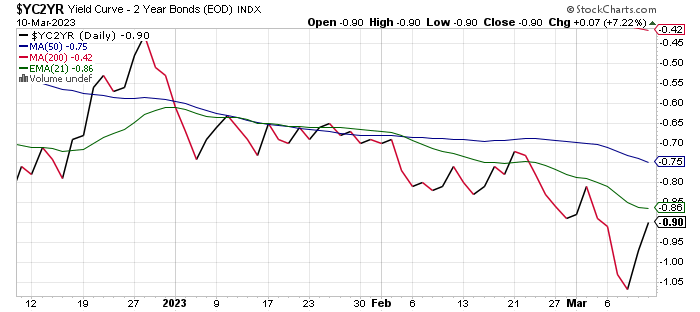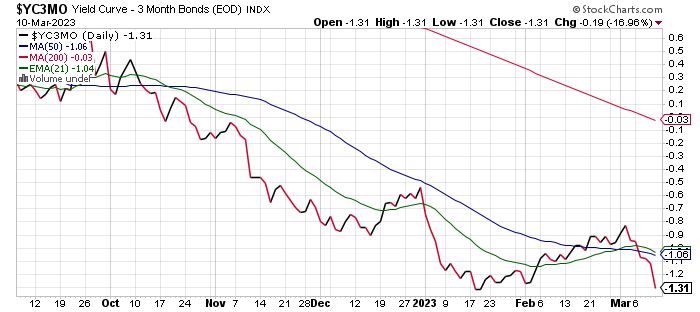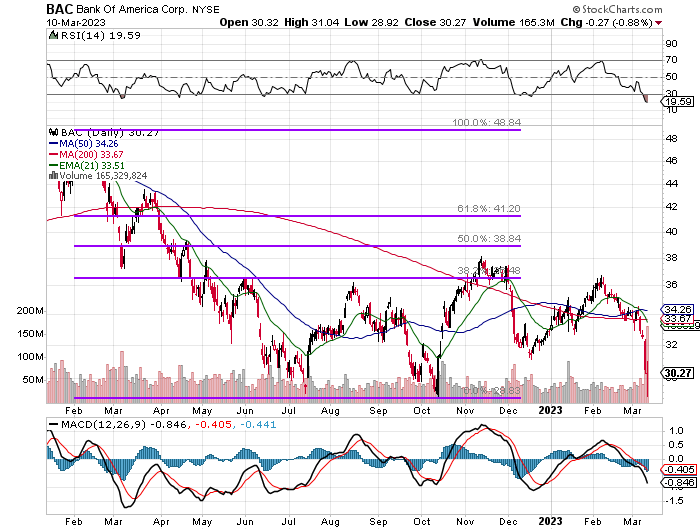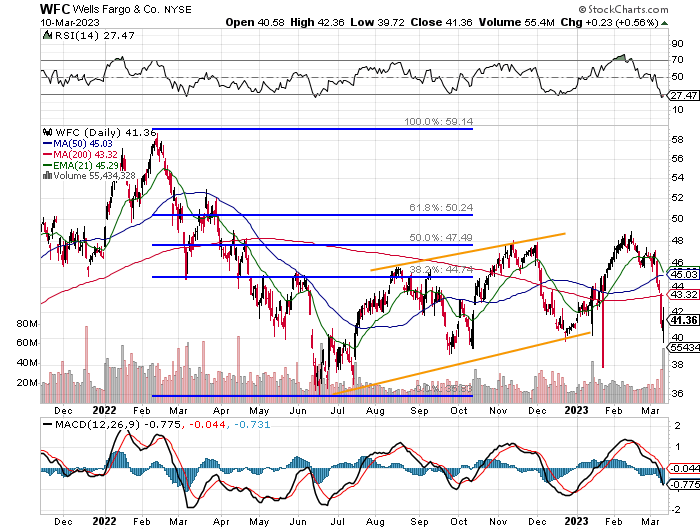Investors want to know.
How well is this particular bank problem contained? Will depositors tend to move toward the perceived safety, whether or not this is reality, of the large, U.S. money-center banks?
How will net interest margin, which was already becoming a problem, behave going forward?
The U.S. Treasury yield curve remains badly inverted despite the sudden strength in and safety (again, perceived) of U.S. paper.
The spread between the U.S. 10-Year and 2- Year Notes made progress on Friday:

But the yield spread between the 10-Year Note and 3-Month T-Bill headed back toward the deeply negative lows of mid-January:

This probably means some tough sledding ahead, even for traditional bankers who might be less reliant on trading or investment banking in order to turn a profit. This will drive the businesses into fee-driven services such as wealth management.
The advent of any coming economic recession, of course, puts all bets off, as financials tend to struggle (along with everyone else) as velocity slows.
What This All Means
Fed Funds Futures have been changing rapidly in just what is being priced in. Monday morning, I now see a 60/40 probability profile for a 25 basis point rate increase on March 22 to get the Fed Funds Rate to 4.75% to 5%, Then, that’s it. That’s the terminal rate, at least for now, which is down from 5.5% to 5.75% last week. These futures markets are now pricing in rate cuts by the September 20 meeting.
Trading This Mess
One key thing to remember is that you don’t have to trade the financials right now unless you’re already knee deep into the action.
As regular readers well know, I have been in two money-center banks well known for their traditional domestic banking businesses. I have not touched the regionals in quite some time, which sounds smarter than it was. I really just was not able to find one I liked.
I was asked last week, on Friday, if I was ready to buy back the portions that I sold in those two banks. I did not take that action on Friday, glad that I took off half of my exposure, and unhappy that I had not sold more.
Given this is where I still have some exposure and given that both of these stocks are coming up on key support, they will remain my focus. Even if I do add some shares back on, in effect successfully extracting capital (trading) around an adverse event, I do not see myself rebuilding these positions back to full strength for a good while.

The support level for Bank of America is around $29. This spot was tested and held back in both October and July. I would likely add one-fourth of what I sold last week at or around $29.
My panic point for BAC is $27.25 as that will be where I am down 8% on the balance of my position (I made 8% on the out last week) and will leave me with a breakeven trade overall.

$37 is where I break even, but I think I have to give $36.50 a chance if it gets there. Should that level crack, I am history at $36, and I’ll take a small loss.
Get an email alert each time I write an article for Real Money. Click the “+Follow” next to my byline to this article.
Source: https://realmoney.thestreet.com/investing/financial-services/banks-16118151?puc=yahoo&cm_ven=YAHOO&yptr=yahoo
